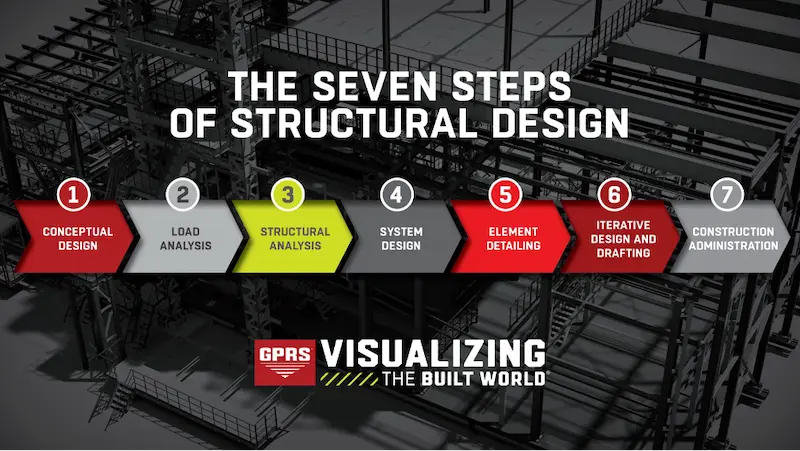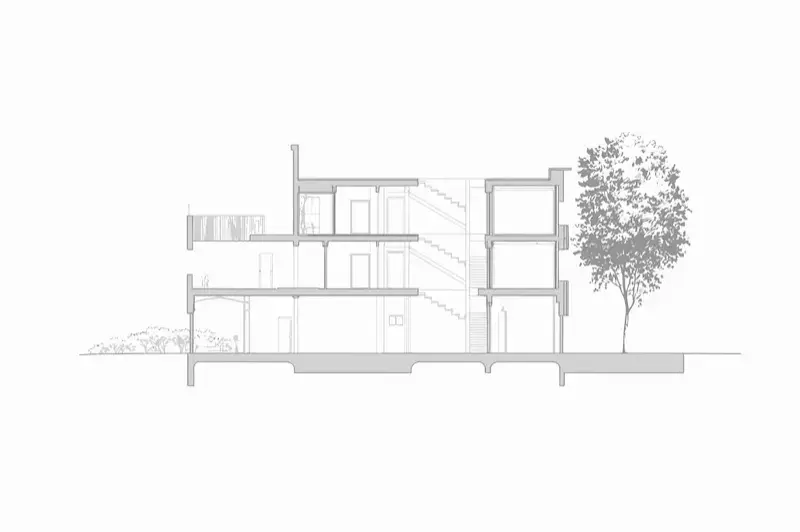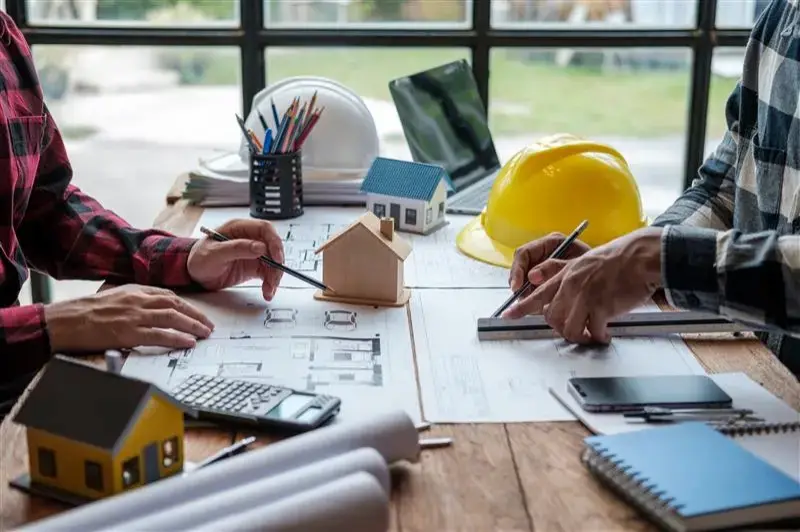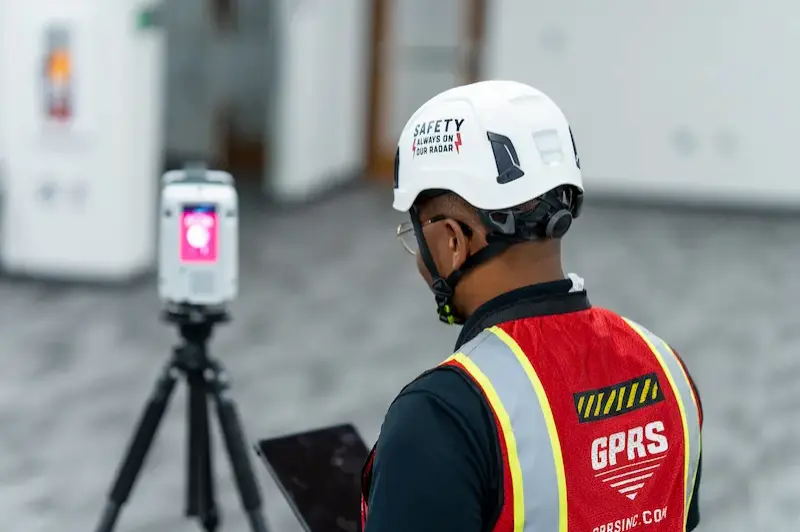Structural design forms the foundation of every successful building project. It ensures that structures are safe and capable of withstanding predicted loads. It also ensures that the building is functional, efficient, and built to last.


It’s not just about calculations. It's about architects, engineers, and contractors working together. This teamwork aims to build a safe and efficient structure.
In this guide, we’ll walk through the step-by-step process of structural design, from conceptual planning to construction administration. We’ll also highlight how GPRS plays an important role in delivering as-built documentation and preventing subsurface damage during construction.
Step 1: Conceptual Design
The structural design process begins with conceptual design. This is the stage where ideas fall into place and the project team assesses feasibility. This phase is important because it sets the foundation for everything that follows. Architects collaborate with structural engineers to convert the architectural vision into a practical and structurally sound concept.
In conceptual design, the team looks at the building’s purpose, space needs, and design goals. They also consider site-specific conditions like soil type and environmental factors. These considerations influence decisions about foundation type, whether shallow or deep, and guide the selection of structural systems and materials like steel, concrete, or timber.
Budget constraints also play a huge role. The challenge is to balance cost efficiency with safety and performance. Preliminary layouts usually have column grids, beam spans, and slab configurations. These elements provide a foundation for more detailed analysis later.
This stage is not just technical; it is also creative and collaborative. Engineers and architects come together to brainstorm solutions. They sketch ideas and use modeling tools to visualize their options. Not considering site conditions or architectural intent early can lead to costly redesigns later. For example, ignoring weak soil layers can lead to foundation settlement issues. This may harm the building's structural integrity.
Step 2: Load Analysis
Once the concept is clear, engineers move on to load analysis. This step determines the forces the building will face throughout its life cycle.
According to Panel Built Incorporated, “A dead load refers to a structure's static, non-moving weight or any permanent components that form an integral part of it. It primarily consists of the weight of the building materials and any fixed installations, such as walls, beams, columns, roofs, and flooring.”
A live load refers to the moving loads that structures face. These come from human occupancy, furniture, vehicles, and other temporary factors.
Environmental loads like wind, earthquakes, snow, and temperature changes make calculations more complex.
Standards like ASCE 7-22 guide engineers in calculating these loads and their combinations. The goal is to make sure the design considers worst-case scenarios. This helps protect against structural failure. For example, a high-rise in a hurricane-prone region will have strict wind load requirements compared to a warehouse in a low-wind zone.
Step 3: Structural Analysis
Once the team determines the loads, the next step is structural analysis. This phase predicts how the building will behave under those loads. This also ensures that it meets safety and performance requirements.

According to Universidad Europea, “Whether it's designing skyscrapers, bridges, or even residential homes, structural analysis plays a crucial role in ensuring the safety, stability, and durability of structures.”
Safety helps engineers figure out how much stress a structure can handle before it fails. Stability confirms that the building will remain intact and secure under extreme conditions. Examples include high winds or seismic events. Durability is the ability of a structure to withstand wear, weather, and time without losing its functionality or strength.
Modern structural analysis often incorporates finite element methods. According to Neural Concept, “it breaks down complex structures into smaller, more manageable elements.” This approach helps engineers identify potential weaknesses early in the design process.
Engineers can also use Building Information Modeling (BIM) for structural analysis. According to Autodesk, “Structural analytical modeling in Revit enables engineers to coordinate between physical and analytical models and facilitates BIM-centric analysis workflows within Revit, allowing bidirectional interoperability between Revit and analysis software.”
You can learn more about BIM in this complete guide.
Step 4: System Design
After analysis, engineers finalize the structural system. Designhub1610 states that “choosing the right structure system is a foundational decision that shapes a building’s design, function, and overall stability.” This includes frames, trusses, shear walls, and more. Integrating with architectural and MEP (Mechanical, Electrical, Plumbing) systems is key. It helps prevent conflicts during construction.

For example, a hospital may need a moment-resisting frame for seismic resilience. Meanwhile, a warehouse might use simple braced frames for cost efficiency. When choosing a structural system, you need to weigh purpose, location, expected loads, budget, and architectural design.
Step 5: Element Detailing
Detailing transforms conceptual plans into actionable drawings. Engineers specify dimensions, reinforcement details, and connection designs for beams, columns, slabs, and foundations. Compliance with standards such as ACI 318 for concrete and AISC 360 for steel ensures safety and durability.
Poor detailing of beam-column joints can cause brittle failures during earthquakes. Attention to detail at this stage is critical.
Step 6: Iterative Design and Drafting
Design is rarely perfect on the first attempt. Engineers Canada states that “The whole process is iterative, meaning that engineers repeat the steps as many times as needed, making improvements along the way as they learn from ‘failure,’ which can aptly be seen as opportunity.”
After the initial calculations and layouts, engineers review their designs. They include insights from structural analysis, coordination meetings, and feedback from stakeholders. This approach makes sure that the final design is both accurate and practical.
Modern workflows often use digital tools and modeling software like BIM to streamline this process. Each iteration allows engineers to identify potential conflicts. This includes a structural beam that intersects with HVAC ductwork. Engineers resolve them before construction begins. Detecting these issues early can save thousands of dollars in rework and help avoid delays.
The iterative process is essential because it acknowledges that design is dynamic. Engineers adapt their plans as new information comes in. This helps them follow codes, use materials better, and improve performance. The cycle continues until the design meets factors such as function, safety, cost, and feasibility.
Step 7: Construction Administration
Once construction begins, the Engineer of Record (EOR) oversees compliance with design specifications. Responsibilities include:
- Reviewing RFIs (Requests for Information)
- Approving deferred submittals
- Inspect sites to verify structural integrity
Lack of timely site inspections can result in deviations from design, compromising safety.
What is the Role of GPRS in Structural Design?
Before excavation or coring, it’s important to know what lies beneath the surface. GPRS provides subsurface scanning to locate utilities, rebar, and voids. Services include utility locating, concrete scanning, and CAD drawings for accurate planning. By leveraging GPRS, contractors avoid costly damage and ensure safety during construction.
Reality capture with 3D laser scanning provides precise as-built documentation of existing conditions. GPRS reality capture services deliver accurate as-built documentation. This streamlines workflow for engineers, supports informed decision making, helps you avoid costly clashes, and more.

Structural design is a meticulous process that blends science, technology, and collaboration. Every step, from planning to construction oversight, ensures the building's safety and longevity. Engineers, architects, and contractors can lower risks and ensure lasting projects. They can achieve this by following best practices and teaming up with professional service providers like GPRS.
What can we help you visualize?
Frequently Asked Questions
How does GPRS reality capture support the conceptual design phase?
GPRS uses 3D laser scanning and photogrammetry to capture existing site conditions with millimeter-level accuracy. This data helps architects and engineers visualize terrain, existing structures, and environmental constraints. Laser scanning enables informed decisions about foundation types, structural systems, and material selection early in the design process.
What role does reality capture play in load analysis?
Reality capture generates high-resolution point clouds and BIM models that simulate how forces will interact with the building. These models integrate with structural analysis software like Revit. This allows engineers to test stress, stability, and durability under various load scenarios. This also helps identify weaknesses before construction begins.



.svg)